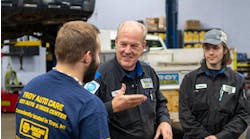May 27, 2015—U.S. auto sales may face a 40 percent drop over the next 25 years because of shared driverless cars, forcing mass-market producers such as GM and Ford to slash output, according to a Barclays PIc analyst.
Vehicle ownership rates may fall by almost half as many families move to having just one car. Driverless cars will travel twice as many miles as current autos because they will transport each family member during the day, according to analyst Brian Johnson of Barclays PIc.
Large-volume automakers “would need to shrink dramatically to survive,” Johnson wrote. “GM and Ford would need to reduce North American production by up to 68 percent and 58 percent respectively.”
The market for autonomous technology will grow to $42 billion by 2025 and self-driving cars may account for a quarter of global auto sales by 2035, according to Boston Consulting Group.
Johnson’s report “Disruptive Mobility,” sees the shift toward cars that drive themselves upending the auto industry. When the majority of cars are driverless, Johnson predicts that annual U.S. auto sales will fall about 40 percent to 9.5 million and the estimated number of cars on American roads will decline by 60 percent to fewer than 100 million.
Automakers are reworking their business models in a world where mobility is being redefined. In the future, Johnson foresees four vehicle categories: traditional cars and trucks driven by individuals for work or in rural areas; “family autonomous vehicles” owned by individuals and shared by a single family; “shared autonomous vehicles” that would be like “robot taxis” summoned by smart phones; and “pooled shared autonomous vehicles” that accommodate multiple riders like a bus or a van.
The cost of mobility for consumers would drop dramatically, according to Johnson.
"By removing the driver from the equation (the largest cost in a taxi ride), the average cost per mile to the consumer could be 44 cents for a private ride in a standard sedan and 8 cents for a shared ride in a two-seater," Johnson wrote, which would be "well below" the $3 to $3.50 per mile consumers now pay to ride in an UberX car or the $1 to $1.50 a mile for an UberPool vehicle.
The shift toward driverless vehicles would benefit transportation network companies like Uber, autonomous technology providers such as Mobileye NV, and makers of low-cost vehicles in addition to consumers, according to the report.


